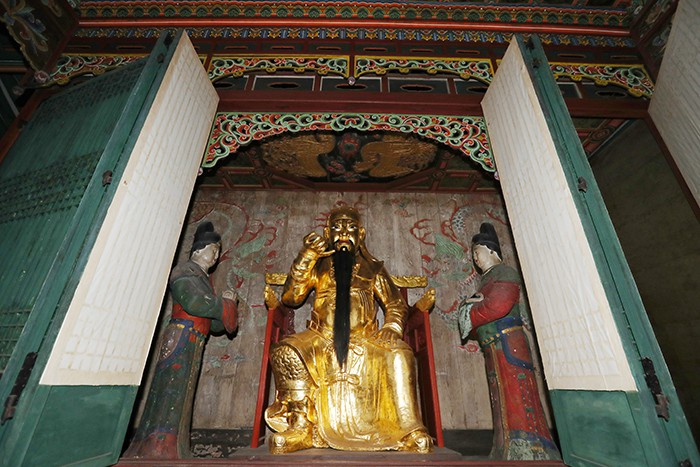
Donggwanwangmyo Shrine (동관왕묘) is dedicated to the Chinese general Guan Yu (관우, 關羽) (d. 220), who played a major role in establishing the 3rd century Chinese state of Shu Han during China’s Three Kingdoms period. A statue of the late general (pictured) watches over his tomb to this day. In 1902, Joseon’s Emperor Gojong (1852-1919) elevated the status of the late general to the level of emperor.
“Before their soldiers went into war, the leaders of the Song Dynasty would perform a jesa, or ancestral ceremony, for the late general Guan Yu. Here in Joseon, monarchs like Sukjong and Yeongjo have performed the same ceremonies over generations. Wouldn’t you say custom dictates that I, too, should follow in their footsteps?”
According to historical records, this is what King Jeongjo (정조, 正祖) (1752-1800, r. 1776-1800), the 22nd ruler of Joseon, said before his courtiers during a visit to the Donggwanwangmyo Shrine (동관왕묘) on Aug. 3, 1779.
On that day, King Jeongjo was on his way to Namhansanseong Fortress (남한산성), southeast of the capital, to meet with his armies and his people. Passing through the Dongdaemun Gate, previously called the Heunginmun Gate, he dropped by the Donggwanwangmyo Shrine to pay his respects to the late General Guan Yu. Records of this can be found in the “Joseon Wangjo Sillok,” or the “Annals of the Joseon Dynasty,” during Jeongjo’s reign.
A quick search for this shrine in the online version of the “Joseon Wangjo Sillok” reveals some 448 results, including 219 articles with the original Chinese characters and 229 articles that have been translated into Korean. These date back to the time of King Seonjo (1552-1608, r. 1567-1608), through to Emperor Gojong (1852-1919, r. 1863-1919). During the Japanese invasion of Korea in 1592, protecting the shrine was an issue of great importance, along with other matters of state.
Of the records that have been translated into Korean, 42 articles come from the annals of King Jeongjo and 44 from those of Emperor Gojong. Taking into consideration their time on the throne, it appears that Emperor Gojong paid more attention to the Donggwanwangmyo Shrine than any other ruler.
Records show that staring in 1899, three years after the founding of the Empire of Korea, Emperor Gojong devoted more of his time to visiting the shrine. Perhaps part of him hoped the spirit of General Guan Yu could help prevent the dawn of the Japanese colonial era, just as his forefathers believed, some 300 years prior, that the general had been on their side during the Japanese invasion of 1592.
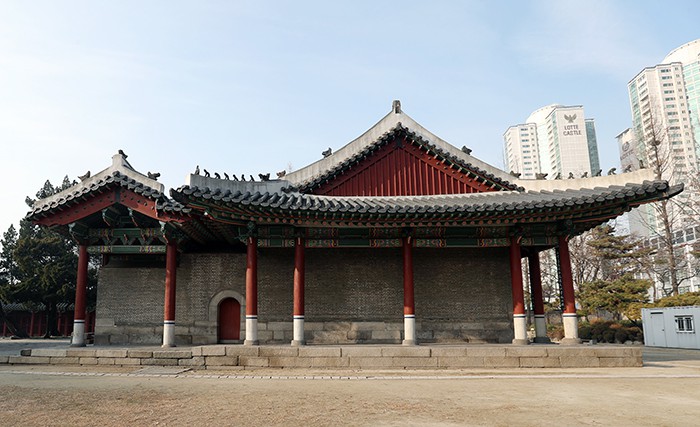
The Donggwanwangmyo Shrine (동관왕묘), constructed between 1599 and 1601, embodies characteristics of both Korean and Chinese architectural styles.
Construction on the Donggwanwangmyo Shrine began in 1599, during the 32nd year of the reign of King Seonjo. It was completed three years later in 1601, and rests today in the exact same spot, right near Dongmyo Station (동묘앞역) along subway lines No. 1 and 6, just out from exit No. 3.
Plans to build the shrine were made a few years after the invasion in 1592, when the Joseon army defeated the Japanese with military support from the Chinese Ming Dynasty. Emperor Wanli of the Ming believed they had won the battle thanks to the guiding spirit of General Guan Yu, and sent a plaque with his own calligraphy to Joseon to commemorate the victory. This plaque was incorporated into the shrine to celebrate Guan Yu, the legendary general of the Three Kingdoms period, once revered as the “God of War.”
The shrine, which is five kans, or rooms, wide and six kans deep, is built in a T-shape, contrary to other palace buildings or ancestral shrines from the same time period. A unique feature of the shrine is that a portion of the walls are made of brick, a clue that some Chinese styles were incorporated into the architecture.
By Jeon Han, Lee Hana
Korea.net Staff Writers
Photos: Jeon Han, Korea.net Photographer
hanjeon@korea.kr
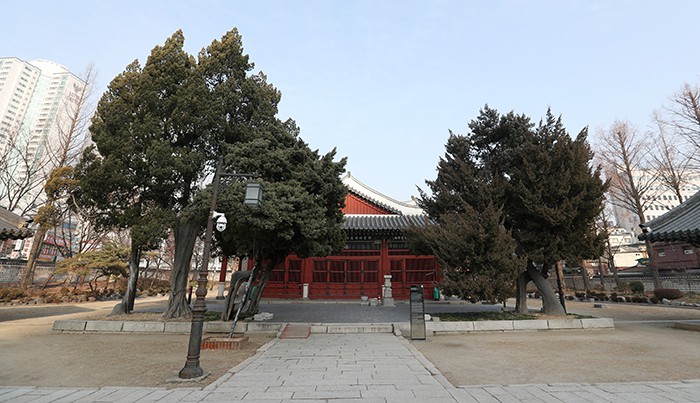
The Donggwanwangmyo Shrine (동관왕묘), located out of exit 3 from Dongmyo Station, invites visitors to explore its grounds. The interior of the shrine, however, is closed to the public.
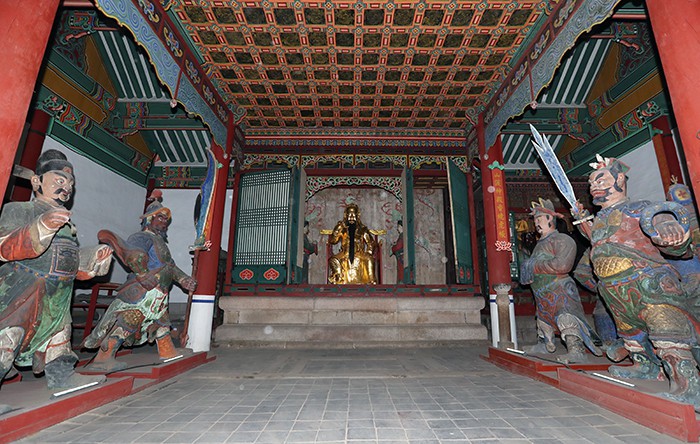
The interior of the Donggwanwangmyo Shrine (동관왕묘) is guarded by a statue of Guan Yu (center) and by statues of Guan Ping, his son, and as his commanders Wang Fu and Zhao Lei. .
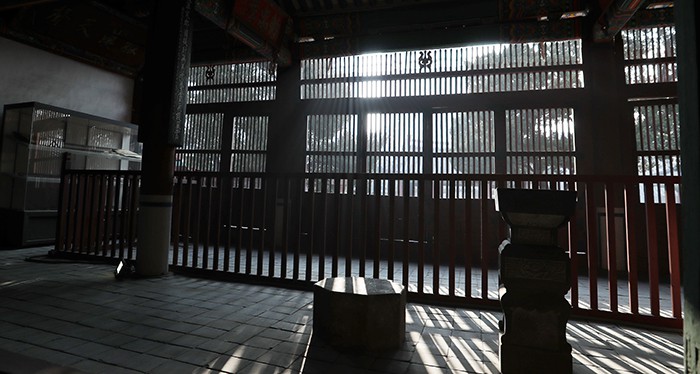
Morning light filters through the latticed windows of the Donggwanwangmyo Shrine (동관왕묘) on Jan. 19. The shrine is considered a paragon of 17th century architecture that combines styles from both Korea and China.






![[102nd March First Independence Movement Day] American journalist’s Seoul home to be opened to public](https://gangnam.com/file/2021/03/usr_1614255694426-218x150.jpg)
















